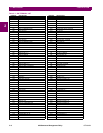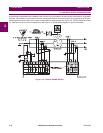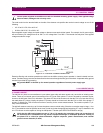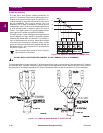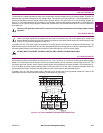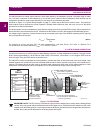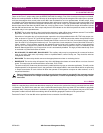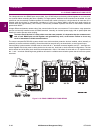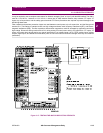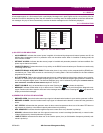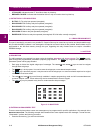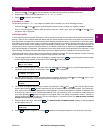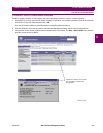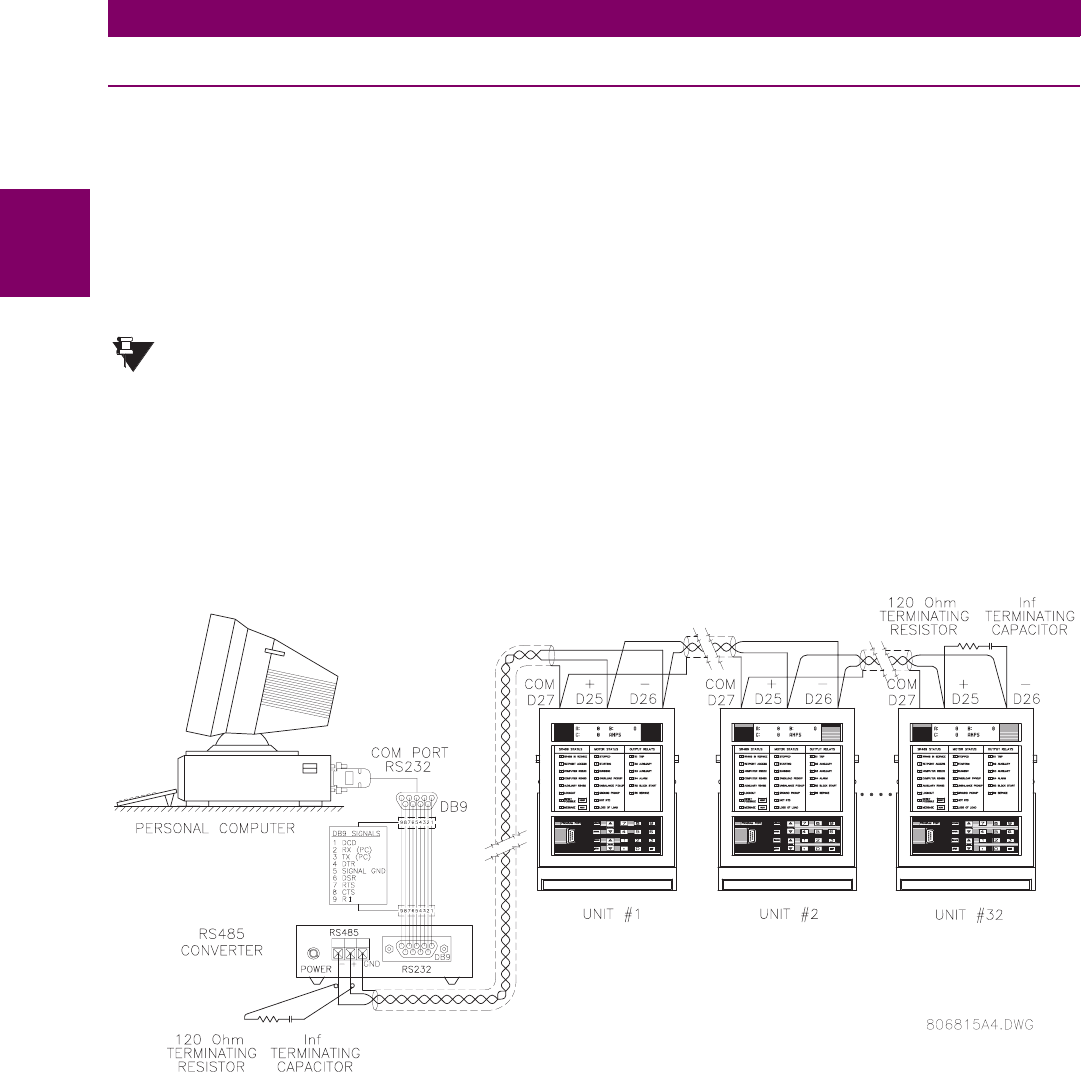
2-14 489 Generator Management Relay GE Multilin
2.2 ELECTRICAL 2 INSTALLATION
2
2.2.12 RS485 COMMUNICATIONS PORTS
Two independent two-wire RS485 ports are provided. Up to 32 489 relays can be daisy-chained together on a communica-
tion channel without exceeding the driver capability. For larger systems, additional serial channels must be added. It is also
possible to use commercially available repeaters to increase the number of relays on a single channel to more than 32. A
suitable cable should have a characteristic impedance of 120 Ω (e.g. Belden #9841) and total wire length should not
exceed 4000 feet (approximately 1200 metres). Commercially available repeaters will allow for transmission distances
greater than 4000 ft.
Voltage differences between remote ends of the communication link are not uncommon. For this reason, surge protection
devices are internally installed across all RS485 terminals. Internally, an isolated power supply with an optocoupled data
interface is used to prevent noise coupling.
To ensure that all devices in a daisy-chain are at the same potential, it is imperative that the common termi-
nals of each RS485 port are tied together and grounded only once, at the master. Failure to do so may
result in intermittent or failed communications.
The source computer/PLC/SCADA system should have similar transient protection devices installed, either internally or
externally, to ensure maximum reliability. Ground the shield at one point only, as shown below, to avoid ground loops.
Correct polarity is also essential. All 489s must be wired with all ‘+’ terminals connected together, and all ‘–’ terminals con-
nected together. Each relay must be daisy-chained to the next one. Avoid star or stub connected configurations. The last
device at each end of the daisy chain should be terminated with a 120 Ω ¼ W resistor in series with a 1 nF capacitor across
the ‘+’ and ‘–’ terminals. Observing these guidelines will result in a reliable communication system that is immune to system
transients.
Figure 2–16: RS485 COMMUNICATIONS WIRING
NOTE



